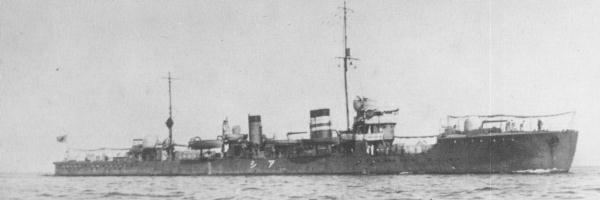Preceded by Kawakaze class Built 1918–1923 | Succeeded by Minekaze class | |
 | ||
Builders Kure Naval Arsenal,Yokosuka Naval Arsenal,Fujinagata Shipyards,Ishikawajima Shipbuilding & Engineering,Kawasaki ShipyardsUraga Dock Company | ||
The Momi-class destroyers were a class of twenty-one second-class destroyers of the Imperial Japanese Navy. All were named for plants. Obsolete by the beginning of the Pacific War, the Momis were relegated to mostly secondary roles, with some vessels serving throughout the war as patrol vessels or high speed transports.
Contents
Background
Construction of the medium-sized Momi-class destroyers was authorized as part of the Imperial Japanese Navy's 8-4 Fleet Program from fiscal 1918-1920, as an accompaniment to the larger Minekaze class with which they shared many common design characteristics. These vessels were produced at a several shipyards around Japan, and when formed into attack squadrons of two to four vessels, made up the backbone of the inter-war Imperial Japanese Navy.
The final seven vessels planned for this series were cancelled, and re-ordered as the new Wakatake-class destroyers in 1919.
Initial design
The Momi class was a development of the Enoki second-class destroyers, relying on the same basic hull. They were quite small, comparable to Royal Navy corvettes. The design incorporated features discovered on German destroyers captured during World War I, including a lengthened forecastle with a break forming a well deck immediately forward of the bridge. This arrangement, apparently derived from contemporary torpedo boat practice, offered the advantage of a low, semi protected area for the forward torpedo tubes albeit at the cost of becoming awash in heavy seas. Initial problems with stability during high-speed turns were later corrected by widening the beam and bringing up the waterline.
When compared with the Minekaze class, the smaller size necessitated a reduction from four boilers to three and the adoption of lighter-weight Parsons direct-drive turbines, resulting in a drop from 38,500 hp in the Minekaze class to 21,500 hp (16,000 kW) in the Momi class. In addition, bunkerage was lowered to 275 tons of oil fuel.
As gear turbine technology was not yet perfected, the navy experimented with a variety of power plants on the Momi class:
As with the Minekaze class, the Type 3 120 mm 45 caliber naval guns were mounted high, with the Q gun removed, and as opposed to the Minekaze, only one set of double torpedo tubes fitted aft.
Early operational history
Due to their shallow draft, the Momi-class destroyers proved to be excellent for operation in coastal waters, and were used along the coast of China to support amphibious landings during the Second Sino-Japanese War.
A number of the Momi-class vessels were lost or disposed during the interwar period. Momi herself was turned over to trials in 1932, while Warabi was run down by the cruiser Jintsu on 27 August 1927 off Maizuru, Kyoto. Kaya and Nashi were scrapped in 1939. Also in 1939, Aoi, Fuji, Hagi, Hishi, Kiku, Satsuki, Tade, Tsuta and Yomogi were removed from front line combat service and converted into patrol vessels.
In 1940, Ashi, Kaki, Nine, Sumire, and Take were disarmed, and re-rated as training ships.
The surviving Momi-class destroyers (Tsuga, Hasu and Kuri) had their amidships 4.7-inch (120 mm) gun replaced by two triple Type 96 25 mm AT/AA Guns from 1942–1943. Tsuga was sunk by air attack 15 January 1945. Hasu was surrendered and scrapped at the end of the war. Kuri was surrendered, but sank after striking a mine off Korea on 8 October 1945.
As patrol boats
Beginning in 1939, nine Momi-class vessels were re-classified as patrol boats and converted for escort duty, having one boiler removed (dropping their power to 12,000 ihp (8,900 kW) and speed to just 18 knots (21 mph; 33 km/h). and their torpedo tubes, minesweeping gear, and one gun mount replaced by six Type 96 25 mm AT/AA Guns, 36 depth charges, and depth charge throwers. As well, their names were dropped and they were simply numbered.
During 1941-42, these vessels were modified again, to carry and launch a Toku Daihatsu-class landing craft, by having the aft smokestack removed and the stern modified with a sloping deck to the waterline, as well as providing accommodation for 150 naval infantry troops. All of these vessels except ex-Fuji (as Patrol Boat #36) were sunk during the course of the Pacific War.
